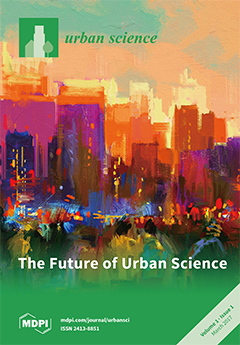Global economy, trade and other human activities are affected by the behaviour and the psychology of the individuals [1–3]. Knowing the influential factors, which contribute to the perception, behaviour and psychology, a positive reinforcement to the economic cycle could be possible [2,4,5]. Human
[...] Read more.
Global economy, trade and other human activities are affected by the behaviour and the psychology of the individuals [1–3]. Knowing the influential factors, which contribute to the perception, behaviour and psychology, a positive reinforcement to the economic cycle could be possible [2,4,5]. Human behaviour is affected by a wide set of factors, some of them being the social and environmental conditions. The expression of behaviour is frequently reflected as wishes, desires and preferences which drive to everyday choices and actions. Scientists have already described the influence of the environmental conditions, especially weather, on the psychology and behaviour via conscious and subconscious functions [6–9]. The essential datasets for the analysis of weather influence on human life are the meteorological data, along with archives of medical registries, psychiatric hospital databases, and police stations’ records [9–17] or structured questionnaires completed by individuals in open public spaces [18–20]. The major drawback of those datasets is that are fragmented and more or less biased by several known and unknown factors [9,21,22] such as the unknown physical, mental and psychological conditions of interviewees along with their acclimatization level when we referred to structured questionnaires [7,23]. An essential part of individuals’ lifestyle (as a part of their behaviour) is the choice of summer vacation destinations. It is known that tourism, especially summer tourism, can be described by the Triple S (Sun, Sea and Sand), which is an abundant feature of the Mediterranean region [24,25]. Many of the major tourism factors for the triple S depend on weather and local climate. Tourist decision making with respect to the destination choice could be supported by specific indices such as, among others, the Tourism Climate Index (TCI) developed by Mieczkowski [26], the Climate Index for Tourism [27] and the ClimateTourism/Transfer-Information-Scheme [25,28,29]. Further, the application of new tools and applications such as Decision Support Systems (DSS) takes into account distinct criteria in a decision making process about preliminary ratting destinations [30]. DSS are usually refers to demand-oriented systems such as destination management or consumer-oriented travel-counselling systems [31]. A DSS is usually built to support the solution of a certain problem or to evaluate an opportunity, through the design of computer models and the simulation of real-life experiences [32]. DSSs continue to improve the quality of decisions by standardizing the process and logic information managers’ choices and making the criteria for determining appropriate outcomes systematic [33]. To investigate the relation between the outdoor thermal conditions and the individuals’ desires related to the summer holidays, we examined the searching frequency of specific keywords as retrieved by the Google Trends service and the values of human thermal index Physiological Equivalent Temperature (PET) during the simultaneous time period. The summer holidays terms, thereafter keywords, were a set of famous summer holiday destinations over Mediterranean Sea and northern coastal European regions, accompanied by some very common words linked with the summer. The results indicate a clearly positive relation between the searched keywords and the PET values.
Full article





